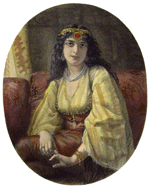Herbert K. Bourne
British engraver, 1825-1907
Conditions
GALLERY of ALL known Bourne engravings on one page
Engravings grouped by subject:
Art subjects
Blblical subjects
Doré subjects
Famous people
Historic events
Literary subjects
Royalty and aristocracy
RARITY. Explanation of my rarity system for Bourne engravings.
VALUATION and INSURANCE. A page about valuing and insuring the large handsigned Doré engravings.
CONDITIONS of prints.
STAMPS known to have been engraved by Herbert Bourne.
PLEASE WRITE if you have discovered more about Herbert Bourne or find any prints not listed here.
"MORE INFORMATION." Before asking for more information, please understand that these pages dedicated to Bourne represent everything I currently know about him, his engravings, and the huge Doré prints. I don't have any hidden knowledge.
BIBLE ENGRAVINGS. Bourne created several engravings for one or more editions of illustrated Bibles. I have never seen any in person, but strongly suspect most of his Biblical prints are already listed among the engravings on this site. PLEASE report the titles of his engravings if you ever spot his engravings in any illustrated Bible.
.
Origins. With the exception of the large Doré prints, the vast majority of surviving Bourne engravings originated from appearances in magazines and books. I suspect most have been removed from their original associations in recent decades. Now that they are in the hands of collectors, most will survive with little further degradation.
The most common problems are those typical of all prints of similar age and origin, namely foxing and minor edge tears. Minor corner tip folds are to be expected, but probably the worst condition problems will have to do with foxing. Fortunately, the paper used on most of the Bourne prints was high quality, so foxing is normally acceptable. If you acquire any prints with heavier than average foxing, prints are cheap enough to simply acquire a second example.
Tight trims. Many of the magazines and books that once held Bourne prints may have sat on shelves for decades, maybe even a century. You can be sure they weren't "babied." During that time, edges often became discolored, frayed or maybe even nibbled. Shelf wear is normal. As long as the damage is on the edges of the print, who cares? Yet a large number of sellers cut off those ratty edges, hoping to disguise age. Yeah, right! Unfortunately, in their efforts at improvement, they often over-trim, even going so far as to remove lettering from the bottom edges. The worst examples seem to occur with "Miriam" "The Last of England" is a close second.
Matting and framing. I consider framing one of the surest ways of removing excess inventory from the collectors market. I am not against framing, per se. However, once a print has been hung on a wall and exposed to sunlight for a few years, it will inevitably acquire a yellow "sunburn" tint within the outline of the frame or mat. Paper with lower cotton content will grow brittle. Either way, prints' minimal values as collectibles will decrease further. Again, prints are currently so cheap that collectible value is probably not much of a consideration.
 Hand coloring. Approximately three to five percent of Bourne prints have been hand-colored with colored pencils, pastels and water colors. Hand-coloring of engraved and lithographed prints was popular in Victorian England where most of these prints originated. However, there is little way of determining whether coloring is old or new. Colored engravings make for affordable wall art, but price-tracking proves that hand-coloring is a near-perfect way to eliminate collectible value entirely. Of the hundreds of offerings I've tracked over the last fifteen-plus years, I cannot find record of a single sale of a hand-colored print. I'm not saying they don't sell, but they certainly don't sell on eBay or eBid.
Hand coloring. Approximately three to five percent of Bourne prints have been hand-colored with colored pencils, pastels and water colors. Hand-coloring of engraved and lithographed prints was popular in Victorian England where most of these prints originated. However, there is little way of determining whether coloring is old or new. Colored engravings make for affordable wall art, but price-tracking proves that hand-coloring is a near-perfect way to eliminate collectible value entirely. Of the hundreds of offerings I've tracked over the last fifteen-plus years, I cannot find record of a single sale of a hand-colored print. I'm not saying they don't sell, but they certainly don't sell on eBay or eBid.